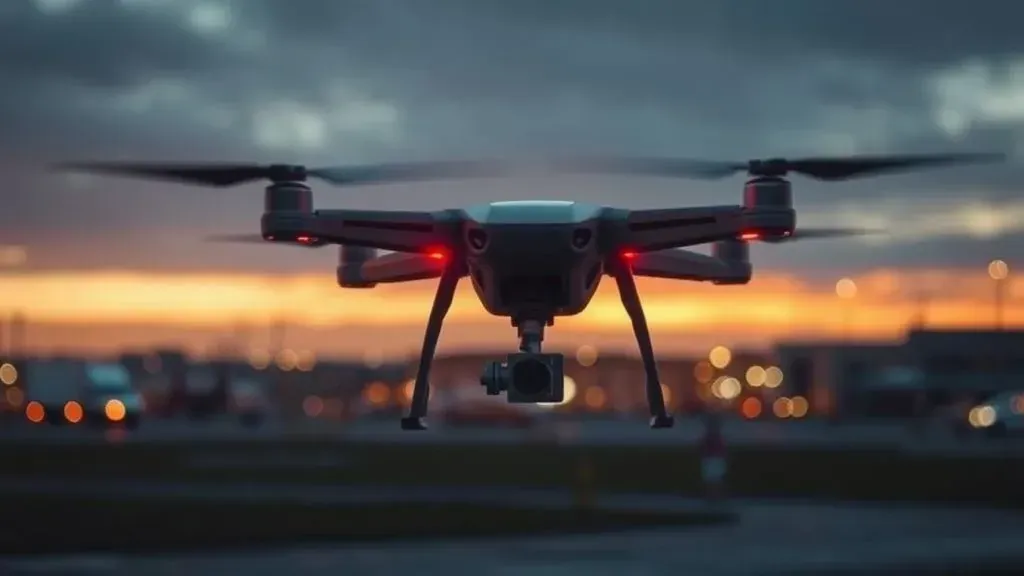
Europe faces a rising trend of drone incursions in 2025, with multiple violations of NATO airspace linked to potential Russian probes. These events disrupt aviation and test alliance responses. Denmark's recent airport closures highlight this growing challenge.
The Aalborg Airport Closure
Authorities closed Aalborg Airport late on September 24, 2025, after spotting unauthorized drones in its airspace. Police confirmed the drones flew with lights on, leading to an immediate shutdown.
The closure affected at least four flights, including those from SAS, Norwegian, and KLM. Diversions rerouted planes to other locations while investigations began.
According to North Jutland police, drones were observed near the airport, prompting a site presence for further probes. They noted the airspace would remain closed until 6:00 AM local time on September 25.
Aalborg serves both commercial and military purposes, amplifying concerns over the incident. Officials stated it was unclear who operated the drones or their intent.
Patterns from Recent Danish Incidents
This event follows a similar disruption at Copenhagen Airport two days earlier. That closure lasted four hours due to coordinated drone activity.
Danish Prime Minister Mette Frederiksen described the Copenhagen incident as the most serious attack on Danish critical infrastructure to date. She did not rule out Russian involvement, according to reports from various sources.
Police observed that the Aalborg drones mirrored the pattern seen in Copenhagen. Additional sightings occurred at smaller airports like Esbjerg and Sønderborg.
National Police Chief Thorkild Fogde encouraged local forces to consider shooting down such drones if safe. This reflects heightened readiness amid ongoing threats.
Broader European Security Context
Europe has recorded over a dozen Russian drone incursions into NATO airspace in September 2025 alone. These include violations in Poland, Estonia, and Romania.
Analysts view these as deliberate tests of NATO's resolve and air defenses. For instance, a Clingendael Institute report notes that such actions prompt alliance responses but reveal gaps.
NATO launched Operation Eastern Sentry to bolster eastern defenses following Russian drones entering Polish airspace. This mission aims to enhance monitoring and interception capabilities.
The Guardian reports that recent incursions carry unpredictable consequences, dividing NATO on response strategies. Some members advocate stronger measures against repeated violations.
According to RFE/RL, multimillion-dollar jets scrambled to intercept drones highlight the cost and complexity of countering these threats.
Implications and Responses
Denmark contacted EU and NATO allies regarding the Aalborg incident. Discussions include potential activation of NATO's Article 4 for consultations on threats.
Defense Minister Troels Lund Poulsen called the drone activity professional and systematic, suggesting a hybrid attack without direct military threat. This aligns with suspicions of external actors probing vulnerabilities.
Investigations link some sightings to shadow fleet vessels near Danish waters. Authorities probe vessels like SEA MAVERICK and PUSHPA for connections.
CNN analysis questions NATO's innovation speed against Russia's drone advancements. Enhanced surveillance and rapid response protocols become essential.
Turkey deployed E-7T aircraft to the Baltics for airspace monitoring under NATO auspices. Sweden and Norway also scrambled helicopters to secure their skies.
These uncategorized drone events expose aviation's susceptibility to low-cost technology. They demand unified international strategies to safeguard critical infrastructure.
This Aalborg shutdown emphasizes drone threats' impact on daily operations and national security. It calls for proactive measures to prevent escalation in tense geopolitical climates.



